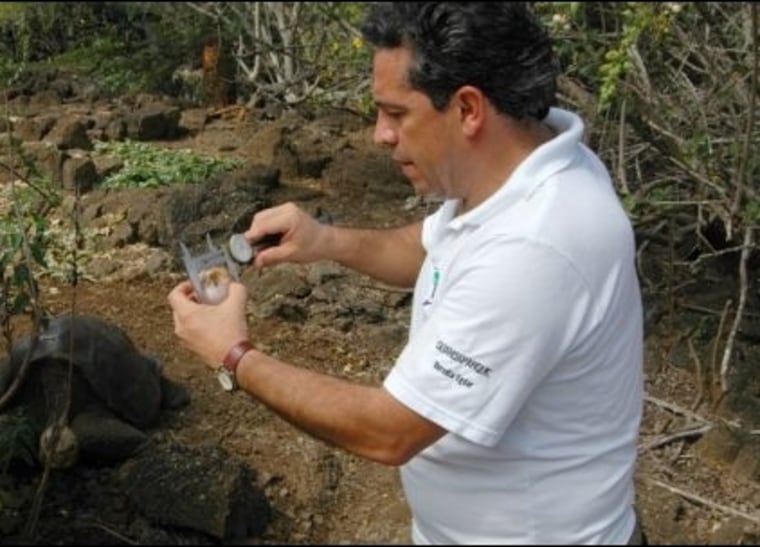There's new hope that the famed Galapagos giant tortoise nicknamed Lonesome George, believed to be the last of his species, could soon be a father.
One of the two female tortoises kept with George at his "bachelor" pen since 1993 has laid five eggs in "perfect condition," the Galapagos National Park said in a statement Tuesday.
George, aged 90 to 100 years old, is the only known living Geochelone abigdoni tortoise, a species native to Pinta Island in the Galapagos chain. His companions are of a similar species.
The park said the eggs are being cared for in an incubation center. It could be clear by November whether they are viable. "Now we have to wait for the incubation period of 120 days to find out whether they are fertile," it said.
George was discovered in 1972. For decades, he had shown little interest in reproducing but, in his 90s, George is said to be in his sexual prime.
Galapagos tortoises were among the species Charles Darwin observed to formulate his theory of evolution in the 19th century.
The 200-pound George stunned conservationists last year by mating for the first time in the 36 years he has been in captivity. But the eggs laid by one of his female companions turned out to be infertile.
Tortoises were hunted for their meat by sailors and fishermen to the point of extinction, while their habitat has been eaten away by goats introduced from the mainland.
Some 20,000 giant tortoises still live on the Galapagos.
